Lately I’ve developed a taste for certain Kentucky bourbons and Irish whiskeys. So my upcoming trip to Ireland is taking on more meaning as I dream of having a dram of Irish whiskey by a peaty fire in a warm pub. And with a probable jaunt over to Scotland, I’m thinking about having a dram of Scottish whisky in a cozy Scottish pub.
Now I’ve never tasted Scottish whisky so I’m not sure I’ll like it. I know it’s different. But I’m not sure exactly what the differences are so I thought I would do a bit of research.
Here’s what I found out.
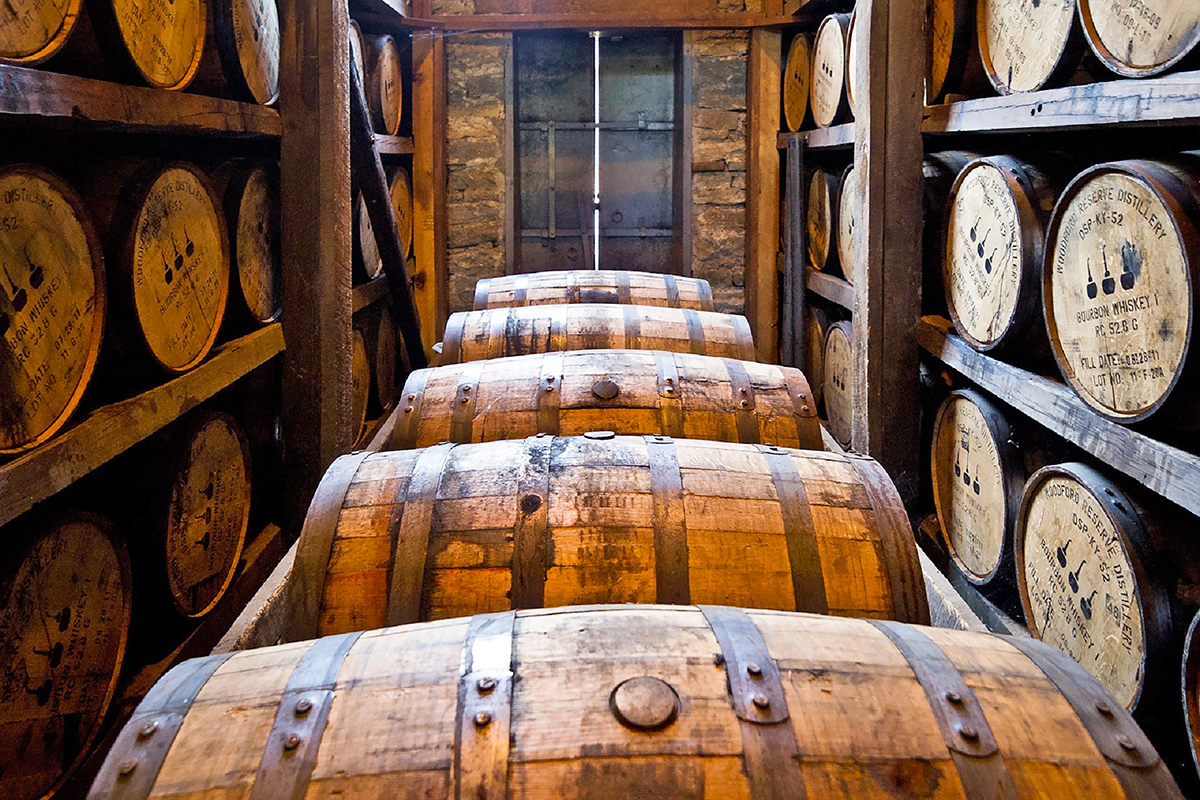
Barrels at Woodford Reserve in Versailles, Kentucky – photo courtesy of Pixabay
Let’s start with Kentucky bourbon.
Having been to the Bourbon Trail in Kentucky, just a short drive from Cincinnati, I learned a bit about bourbon and what makes it, well, bourbon. And this is when I discovered that I actually like some bourbons.
Bourbon, like most spirits, is made of fermented grain mash. But for it to be bourbon, it must be made from at least 51% corn. The other grains can be whatever the distiller wants, but barley, wheat and rye are commonly used. And by law, the blend must be stored in charred oak containers. This gives bourbon a bit of a smoky flavor that balances out the sweetness from the corn.
Bourbons can greatly vary as a result of the blend of grains. I’m a big fan of Woodford Reserve and Woodford Reserve Double Oaked.
Did you know bourbon tastes great with chocolate? Try it sometime. Some nice dark chocolate and a little dram of bourbon on a cold winter night is the perfect way to end a day!
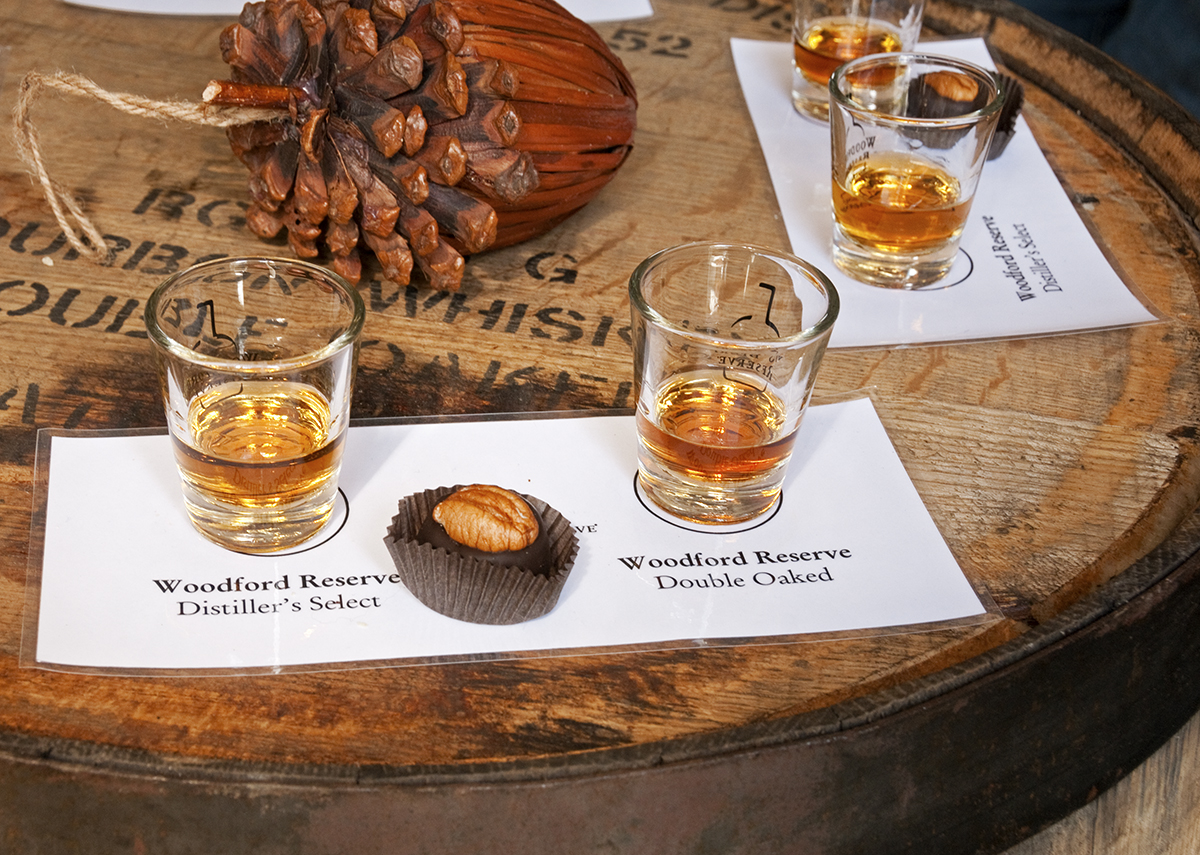
Woodford Reserve tasting with chocolate! Yum!! ©Lynne P Nieman
My first taste of Irish whiskey …
Occurred in Ireland. And it didn’t go so well.
My dad is a huge bourbon and whiskey lover so when my folks went to Ireland with me in summer 2010, the one thing on Dad’s “must do” list was to visit the Jameson Distillery.
So en route from Kinsale to the countryside of County Waterford we stopped by the Jameson Distillery in Midleton for the tour and a taste.
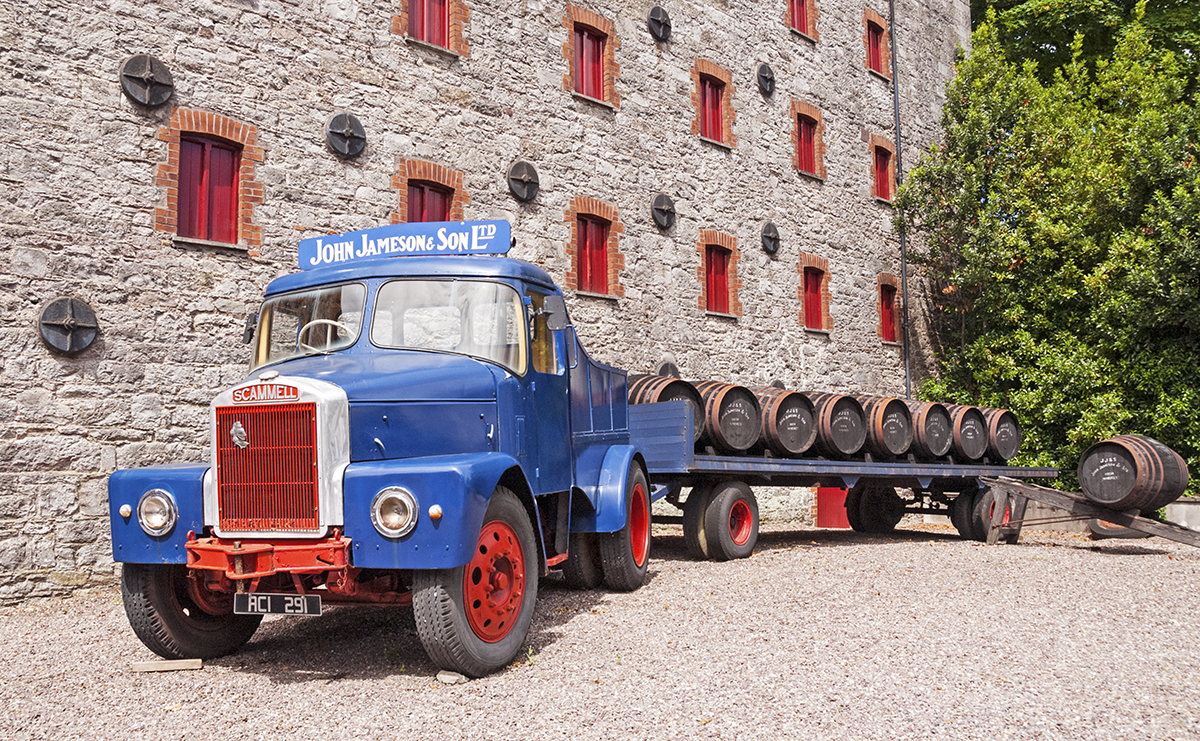
Old truck at Jameson Distillery in Midleton, Ireland ©Lynne P Nieman
The tour is very informative. I love hearing the history and then the process of how they turn this grain mash into the gold liquid that ends up in your glass.
At the end everyone gets a free dram of the basic Jameson.
I hated it.
I tried to like it. I wanted to like it. But I couldn’t drink it down. My dad was, of course, in heaven!
Fast forward 5 1/2 years and I decided to try it again — especially after my trip to the Bourbon Trail. Maybe I would like Jameson. I nabbed some of my dad’s and lo and behold…I loved it!
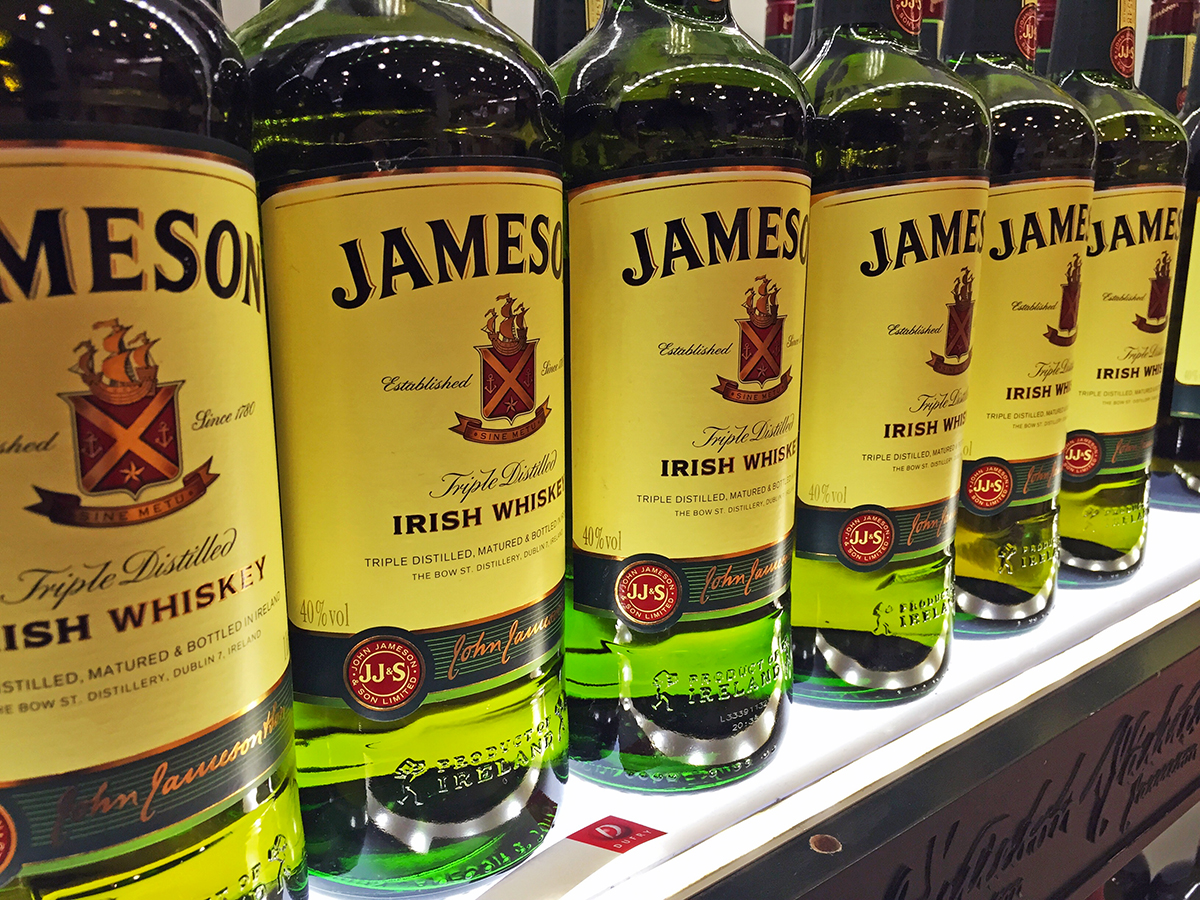
Bottles of Jameson whiskey – photo courtesy of Pixabay
So what makes Irish whiskey, Irish whiskey?
To be honest, it’s simply that it is made in the Republic of Ireland or Northern Ireland.
Well that’s not 100% true. Both Irish whiskey and Scottish whisky are made from fermented barley mash. Sometimes just barley is used and sometimes other grains are added to make a blended whiskey.
In Ireland there tends to be less regulations so Irish whiskeys can vary greatly. They can have smoky, peaty flavors that are often associated with Scottish whisky. Although this type of Irish whiskey is not as common.
One of the biggest differences is that Irish whiskey typically undergoes triple distillation making it lighter. And the barley goes through a drying process that tends to keep the natural flavor of the grain, giving Irish whiskey it’s trademark taste.
The other difference is that Irish whiskey is typically aged in the cask for a minimum of 3 years.
So there are some regulations, but not too many. I’ve had a few Irish whiskeys, beside Jameson, that I like. I’m anxious to try more at the source.
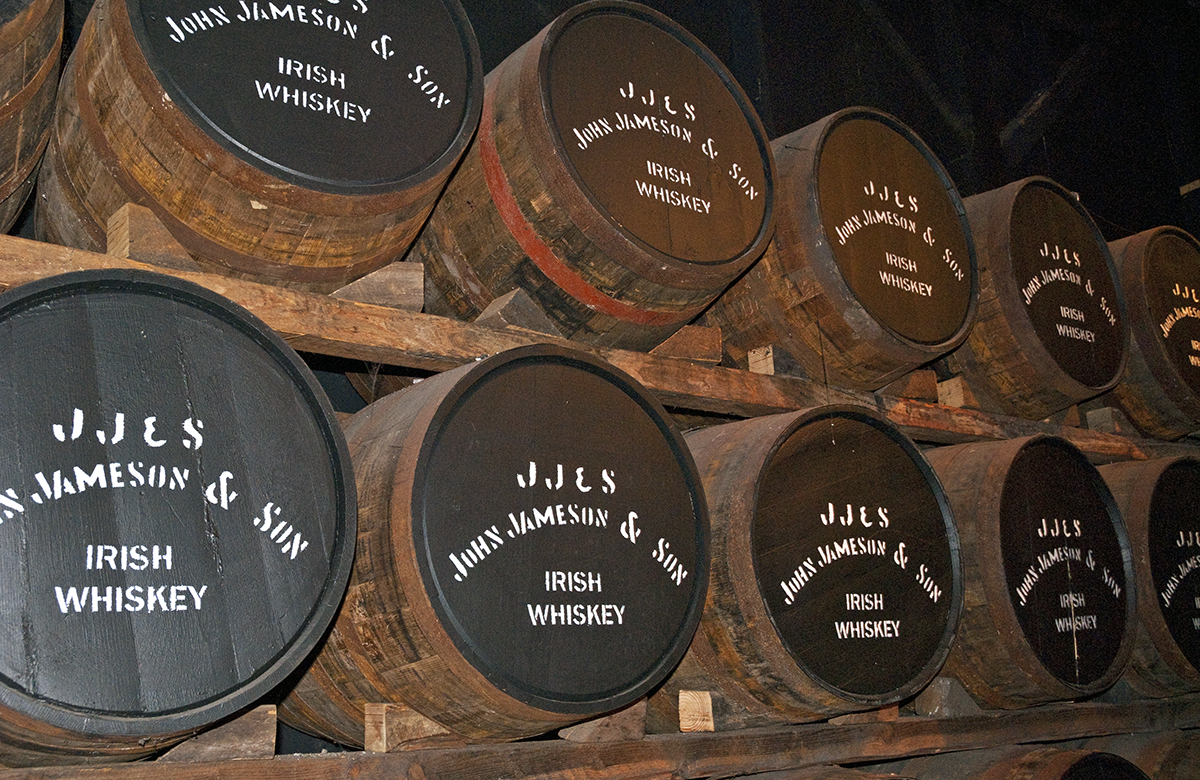
Barrels of Jameson in the Midleton Distillery, Ireland ©Lynne P Nieman
So what’s Scottish whisky?
Also known as Scotch here in the United States, Scottish whisky (notice there is no “e”) is very similar to Irish whiskey. It’s often said that the Irish invented whiskey but that the Scots perfected it.
Scottish whisky is usually distilled twice, not three times like Irish whiskey. It typically has a more peaty, smoky flavor to it, giving it a distinct taste.
And Scottish whisky is aged in the cask for a minimum of 2 years. But often you’ll see it aged quite a bit longer.
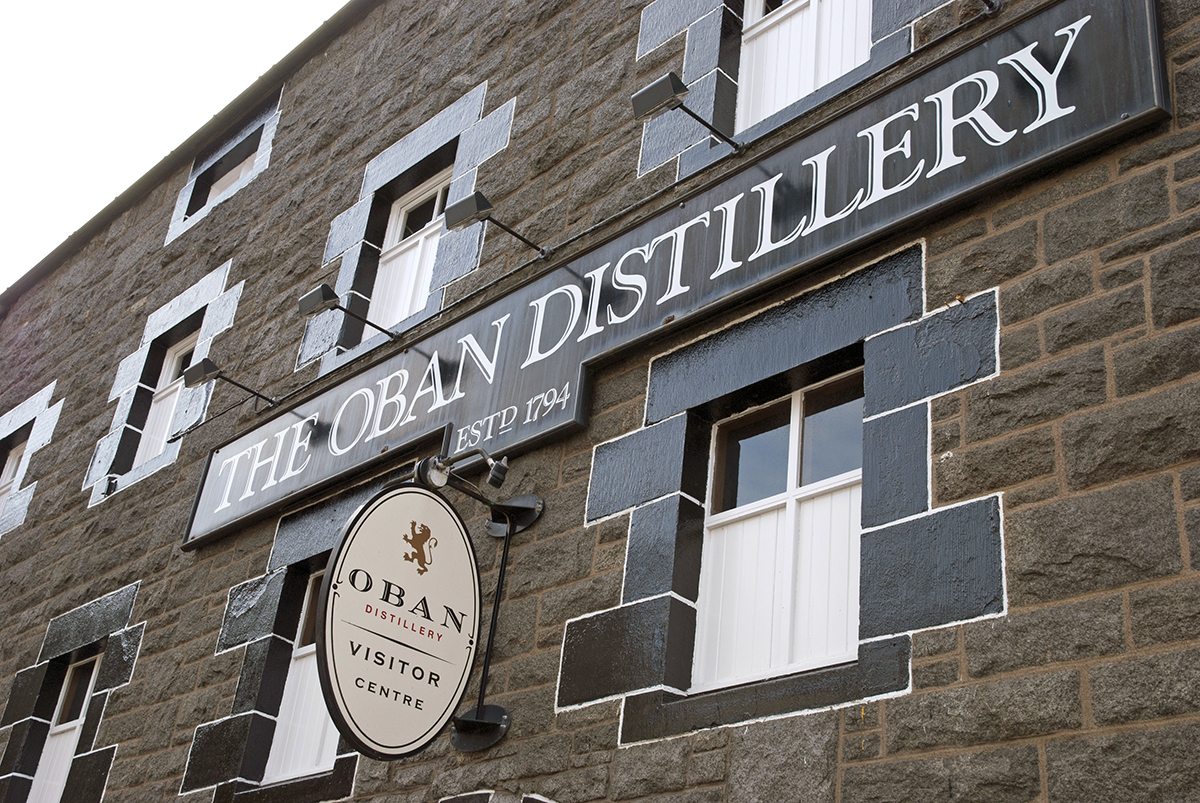
Oban Distillery in Scotland – photo courtesy of Pixabay
Some folks say that Scottish whisky has more of a “bite” to it. From what I understand (as I said, I’ve not tried Scottish whisky yet) it is more of an acquired taste. But many say that this unique taste is what makes drinking Scottish whisky such a rich experience.
The words “single malt” are often found on the labels of Scottish whisky. This means that it is produced at one distillery using only malted barley and in copper pot stills. Single malt Scottish whisky is typically the most expensive, but the most flavorful and each one tastes different.
Blended Scottish whisky is just that — blended. Perhaps it’s produced at a couple of distilleries or maybe with other grains besides malted barely. For some this is their preference because the blending takes some of that “bite” out of the whisky. It’s simply a matter of taste. And often tastes change over the years.
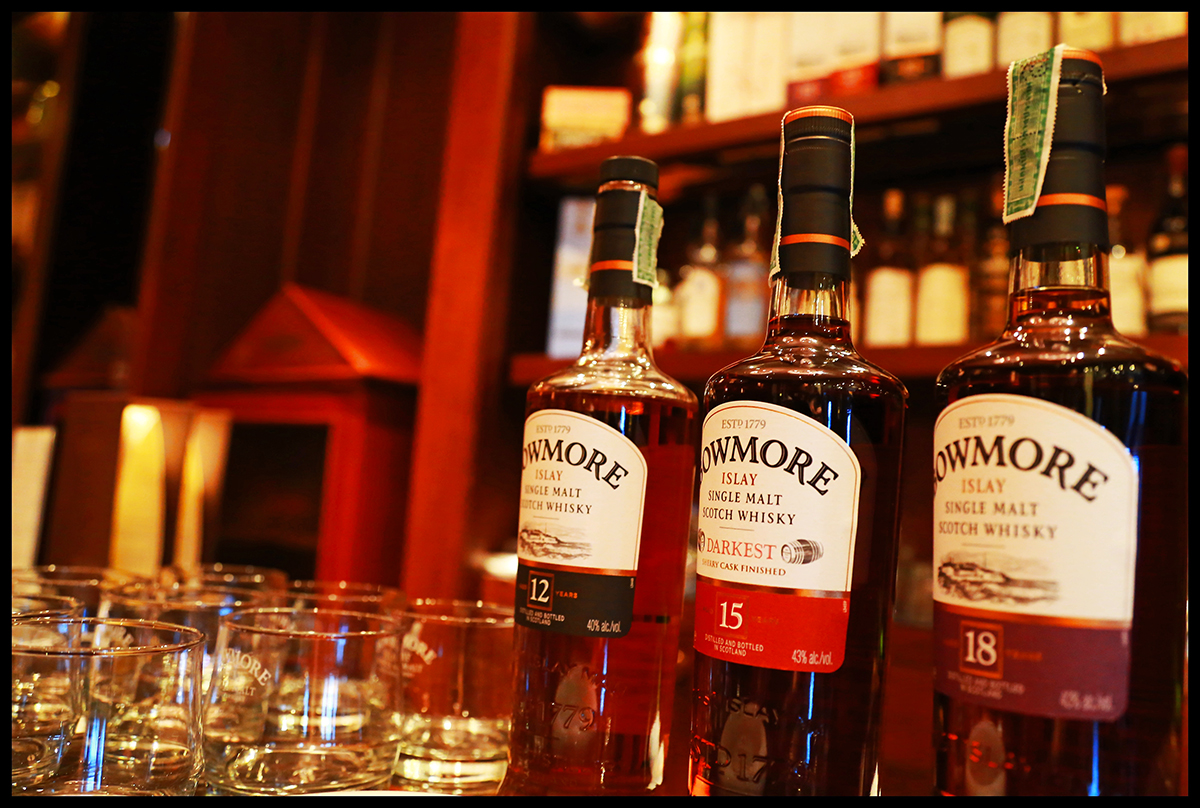
Bottles of Bowmore, a Scottish whisky – photo courtesy of Pixabay
Did you learn something?
I did. I knew a little bit about whiskey and bourbon from my tours in Kentucky and Ireland. But I wasn’t sure how Scottish whisky compared to those. Now I have a better understanding.
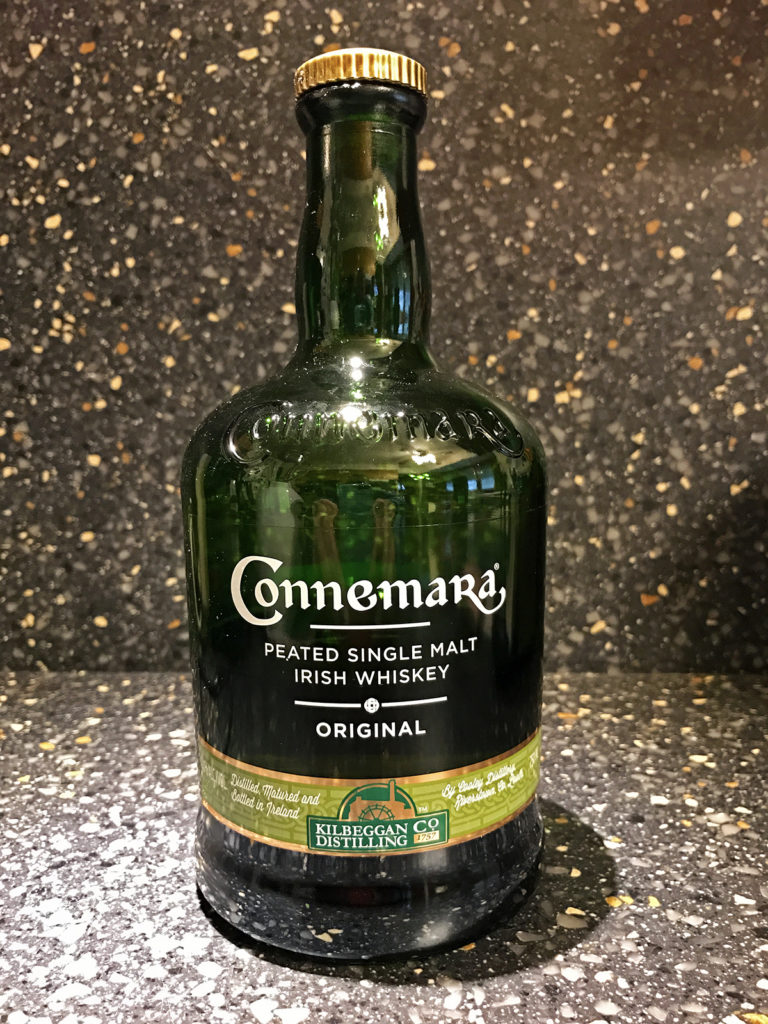
My bottle of Connemara Irish whiskey ©Lynne P Nieman
Connemara is a peaty Irish whiskey that I like. So with that in mind, I’m really looking forward to trying Scottish whisky. And now that I know a bit more about Irish whiskey, I’m super excited to try more varieties in Ireland. Of course, I can’t wait to have a simple Jameson at the source. This time I’m pretty sure I’ll be able to drink it — and that I’ll love it!! I think I’m becoming my father’s daughter…







